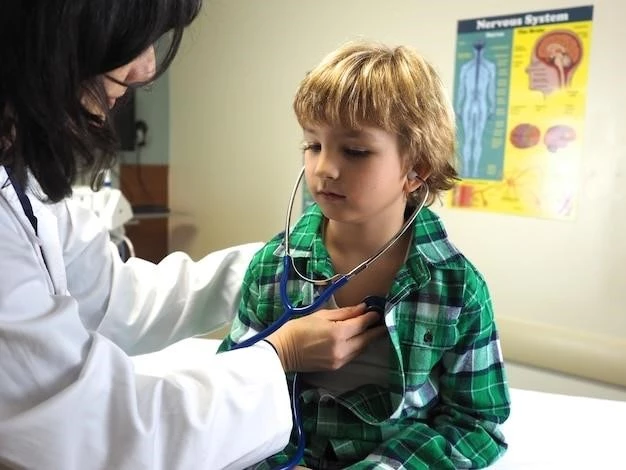Understanding Infantile Myofibromatosis Disease
Infantile myofibromatosis is a rare genetic condition characterized by the development of benign tumors in the fibrous tissue of the skin, muscle, and bones in children. These tumors, also known as nodules, can vary in size and number.
The medical management of infantile myofibromatosis often involves a multidisciplinary approach, including close monitoring, surgical intervention, and other treatment modalities. The prognosis for individuals with this condition depends on the extent of the disease and the response to treatment.
Overview of Infantile Myofibromatosis Disease
Infantile myofibromatosis is a rare medical condition that primarily affects infants and young children. It is characterized by the development of benign tumors, or nodules, in the fibrous tissue of the skin, muscle, and bones. These tumors can range in size from small nodules to larger masses and can occur in various parts of the body.
There are two main types of infantile myofibromatosis⁚ solitary infantile myofibromatosis, which involves a single tumor, and multicentric infantile myofibromatosis, which involves multiple tumors. The tumors are usually slow-growing and may not cause any symptoms initially.
Infantile myofibromatosis is considered a genetic condition, with most cases being sporadic and not inherited. However, there have been rare cases reported in families, suggesting a possible genetic component. Mutations in certain genes have been associated with the development of infantile myofibromatosis, but the exact cause of the condition is not fully understood.
Diagnosing infantile myofibromatosis typically involves a combination of physical examination, imaging studies such as ultrasounds or MRIs, and sometimes a biopsy of the affected tissue for further analysis. The presence of characteristic tumors in the fibrous tissue can help confirm the diagnosis.
While infantile myofibromatosis is generally considered a benign condition, the presence of tumors in vital structures like the airway or gastrointestinal tract can cause complications and require medical intervention. Treatment options for infantile myofibromatosis include observation, surgical removal of tumors, and other therapies depending on the location and size of the tumors.
Overall, the prognosis for individuals with infantile myofibromatosis varies depending on the extent of the disease, the number and size of tumors, and the response to treatment. Regular monitoring and follow-up care are essential to manage the condition and address any potential complications that may arise.
Types of Infantile Myofibromatosis
Infantile myofibromatosis presents in two main types⁚ solitary infantile myofibromatosis (SIM) and multicentric infantile myofibromatosis (MIM). Solitary infantile myofibromatosis is characterized by the development of a single tumor or nodule in the fibrous tissue, which can occur in various locations including the skin, muscle, and bones.
In contrast, multicentric infantile myofibromatosis involves the presence of multiple tumors or nodules in different parts of the body. These tumors can vary in size and can affect several organs and tissues simultaneously. Multicentric infantile myofibromatosis is less common than the solitary form.
Both types of infantile myofibromatosis are benign in nature, meaning they are non-cancerous growths. While the tumors associated with infantile myofibromatosis are generally slow-growing and non-invasive, they can cause symptoms and complications depending on their size and location.
The distinction between the two types of infantile myofibromatosis is important in determining the appropriate treatment approach and management plan for affected individuals. Solitary infantile myofibromatosis may be managed differently from the multicentric form based on factors such as the number of tumors, their size, and their impact on surrounding tissues.
It is essential for healthcare providers to accurately diagnose the type of infantile myofibromatosis present in a patient in order to provide tailored care and address any potential issues that may arise from the growth of these benign tumors. Regular monitoring and evaluation are key components of managing both types of infantile myofibromatosis to ensure the best possible outcomes for affected individuals.
Causes and Genetic Factors
Infantile myofibromatosis is believed to be caused by genetic mutations that occur spontaneously in most cases, leading to the development of benign tumors in the fibrous tissue. While the exact cause of these mutations is not fully understood, researchers have identified specific genetic factors that may contribute to the development of infantile myofibromatosis.
Studies have suggested that alterations in genes such as PDGFRB (Platelet-Derived Growth Factor Receptor Beta) and NOTCH3 (Notch Receptor 3) may play a role in the pathogenesis of infantile myofibromatosis. These genetic changes can lead to abnormal growth and proliferation of cells in the fibrous tissue, resulting in the formation of nodules or tumors.
In some cases, infantile myofibromatosis can be inherited in an autosomal dominant pattern, where a mutated gene from one parent is sufficient to cause the condition. However, most cases of infantile myofibromatosis are sporadic, meaning they occur randomly without a clear family history of the condition.
Environmental factors or prenatal exposures are not known to significantly contribute to the development of infantile myofibromatosis. The condition is primarily attributed to genetic abnormalities that arise during early development in the womb.
Genetic testing may be recommended for individuals with infantile myofibromatosis to identify specific mutations that are associated with the condition. Understanding the genetic basis of infantile myofibromatosis can help healthcare providers make informed decisions regarding treatment and management strategies.
Further research is ongoing to elucidate the underlying genetic mechanisms of infantile myofibromatosis and to explore potential targeted therapies that may be developed based on these findings. By unraveling the genetic complexities of this rare disease, scientists hope to improve diagnosis, prognosis, and treatment options for individuals affected by infantile myofibromatosis.
Symptoms and Diagnosis
Infantile myofibromatosis can present with a variety of symptoms depending on the location and size of the tumors. In many cases, these benign growths do not cause any noticeable symptoms and may only be detected incidentally during a physical examination or imaging study.
When symptoms do occur, they can vary widely and may include the presence of palpable masses or nodules under the skin, muscle weakness or stiffness, restricted movement of affected body parts, and in more severe cases, compression of nearby structures leading to respiratory or gastrointestinal issues.
Diagnosing infantile myofibromatosis typically involves a combination of clinical evaluation, imaging studies such as ultrasounds, MRIs, or CT scans, and sometimes a biopsy of the affected tissue for pathological analysis. The presence of characteristic tumors in the fibrous tissue is key to confirming the diagnosis of infantile myofibromatosis.
Healthcare providers may also consider the patient’s medical history, family history of similar conditions, and any associated symptoms when evaluating a suspected case of infantile myofibromatosis. Differential diagnoses may include other benign tumors, fibromatosis, or other genetic conditions that present with similar features.
Early detection and accurate diagnosis of infantile myofibromatosis are crucial for initiating appropriate management and monitoring strategies. Regular follow-up appointments and imaging studies may be recommended to track the growth of tumors, assess potential complications, and adjust the treatment plan as needed.
Given the rarity of infantile myofibromatosis and the variability in presentation, healthcare providers with expertise in pediatric tumors and genetic conditions play a vital role in the diagnosis and management of this condition. Collaboration among specialists from different medical disciplines may be needed to provide comprehensive care for affected individuals.
Medical Management of Infantile Myofibromatosis
The medical management of infantile myofibromatosis often involves a multidisciplinary approach to address the varying needs of affected individuals. Treatment strategies may be tailored based on factors such as the type of tumors present, their size and location, and any associated symptoms or complications.
Observation may be recommended for asymptomatic cases of infantile myofibromatosis where the tumors are small, not causing any issues, and are not located in critical areas that may lead to complications. Regular monitoring through physical exams and imaging studies can help track the growth of tumors and detect any changes over time.
Surgical intervention is a common approach for the management of infantile myofibromatosis, especially when the tumors are large, causing symptoms, or located in areas that may impact bodily functions. The goal of surgery is to remove the tumors completely while preserving surrounding healthy tissue.
In cases where surgery may not be feasible or when tumors are inoperable due to their location or size, other treatment modalities such as laser therapy, cryotherapy, or pharmacological interventions may be considered. These alternative approaches aim to reduce the size of the tumors, alleviate symptoms, or slow down their growth.
Depending on the clinical presentation and response to initial treatments, a combination of surgical and non-surgical interventions may be employed to manage infantile myofibromatosis effectively. The choice of treatment approach is individualized and may evolve over time based on the patient’s condition.
Regular follow-up visits with healthcare providers, including specialists in pediatric oncology, dermatology, surgery, and genetics, are essential for ongoing management of infantile myofibromatosis. These visits allow for close monitoring of the disease progression, assessment of treatment efficacy, and timely adjustments to the management plan.
Given the rarity of infantile myofibromatosis and the complexity of managing benign tumors in pediatric patients, a coordinated and collaborative approach involving a team of healthcare professionals is crucial to ensure optimal care and outcomes for individuals affected by this condition.
Prognosis and Long-Term Outlook

The prognosis for individuals with infantile myofibromatosis varies depending on various factors, including the type of tumors present, their size and location, the extent of disease involvement, and the response to treatment interventions. In many cases, the outlook for infantile myofibromatosis is favorable, especially with early detection and appropriate management.
Solitary infantile myofibromatosis, characterized by a single tumor, generally has a better prognosis compared to the multicentric form with multiple tumors. The prognosis may also be influenced by the presence of symptoms, the potential for complications such as airway obstruction or organ compression, and the risk of tumor recurrence.
Early diagnosis and timely initiation of treatment are key factors in improving the prognosis for individuals with infantile myofibromatosis. Close monitoring of tumor growth, regular follow-up evaluations, and multidisciplinary coordination of care contribute to long-term management and outcomes for affected patients.
While infantile myofibromatosis is typically considered a benign condition, there is a risk of recurrence or persistence of tumors even after surgical removal. Some individuals may require additional interventions or long-term monitoring to address recurrent tumors or new growths that may develop over time.
The long-term outlook for individuals with infantile myofibromatosis is generally positive, with many patients experiencing resolution of symptoms, stabilization of disease progression, and improvement in quality of life with appropriate medical management. However, the need for ongoing surveillance and potential treatment modifications underscores the importance of comprehensive care for these individuals.
Advancements in research and treatment modalities for infantile myofibromatosis continue to enhance the prognosis and long-term outlook for affected individuals. With ongoing scientific discoveries and evolving medical interventions, the potential for improved outcomes and quality of life for patients with this rare genetic condition remains promising.
